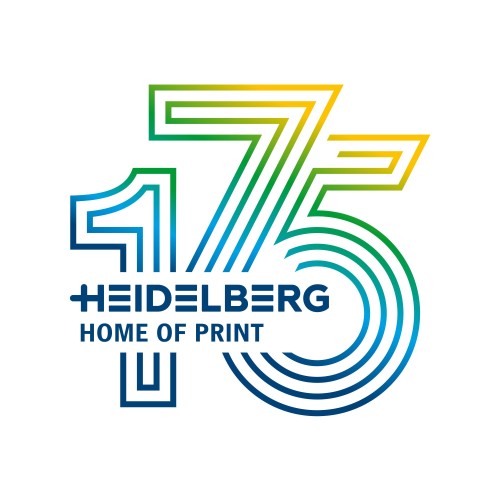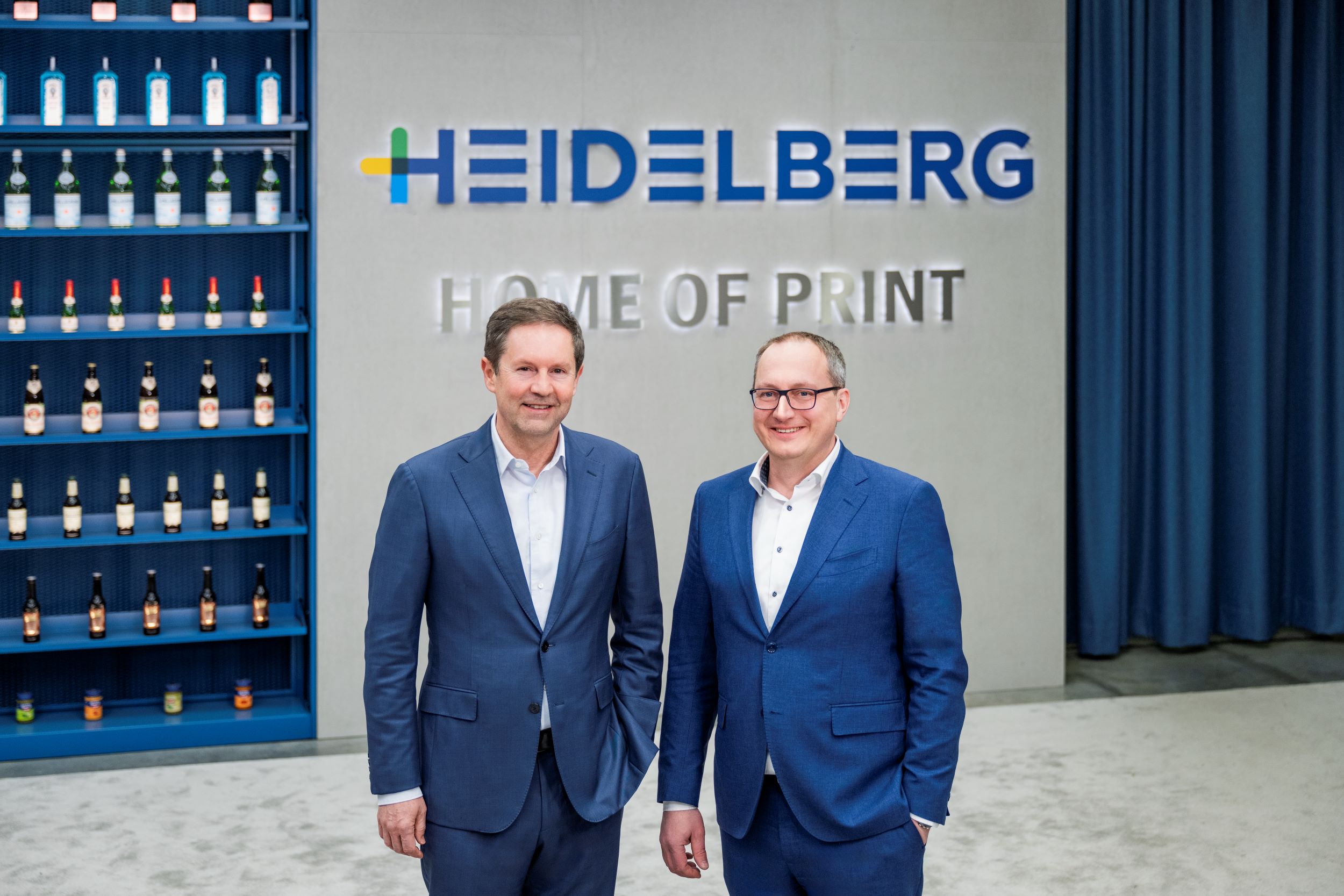
On March 11, 1850, Andreas Hamm and his three partners establish the Hemmer, Hamm & Co. bell foundry and machine factory in Frankenthal. This event marks the birth of HEIDELBERG, as they also manufacture printing presses.
In 1894, Wilhelm Müller takes over the Hamm family’s Schnellpressenfabrik and moves production to Heidelberg, the renowned university city on the Neckar River. Despite economic challenges around 1900, innovation drives the future—the versatile Heureka rotary press provides fresh momentum, propelling the company forward.
In 1921, the very first Schnellpressenfabrik Heidelberg windmill press goes into series production. Manufactured on an assembly line from 1926, the iconic Tiegel prints up to 3,000 sheets per hour. The machine quickly becomes a best- and long-seller and is the epitome of precision, performance and reliability.
In October 1950, Schnellpressenfabrik Heidelberg celebrates its 100th anniversary. The ceremony, held in the cylinder production hall, attracts more than 200 guests. The day before the event, HEIDELBERG employees work tirelessly on the preparations...
In 1951, visionary HEIDELBERG CEO Hubert H.A. Sternberg co-founds drupa, which has since become the world's largest printing industry trade show and one of Europe's premier exhibitions. Highlight of the first edition: the latest version of the Tiegel which prints at the dazzling speed of 5,000 sheets per hour.
The “economic miracle” is in full swing: in July 1957, Schnellpressenfabrik Heidelberg opens its new factory in Wiesloch. The first phase of construction includes the two first production halls, an administrative building and an office wing. Three other halls are built up until 1968.
A product of meticulous development work: introduced as a prototype in Chicago in 1974, the Speedmaster prints 11,000 sheets per hour. A year later, the sheetfed offset press for multicolor printing comes onto the market – and is still a bestseller today.
HEIDELBERG acquires a 30 percent stake in the Swiss printing press manufacturer Gallus, one of the market leaders in label printing. The company is fully taken over in 2014. Ferdinand Rüesch, the former owner of Gallus, becomes an anchor shareholder at HEIDELBERG.
In a year both feared and eagerly anticipated, HEIDELBERG leads the printing industry into the digital era with Prinect. This innovative workflow software streamlines prepress and printing operations, seamlessly integrating production steps for a flawless data flow.
In Qingpu, on the outskirts of Shanghai, HEIDELBERG is building an assembly hall. The production of folding machines starts in 2006. From 2007, sheetfed offset presses for the Chinese market are assembled in a second hall, followed by a third hall in 2010. Qingpu is a success story for the group.
HEIDELBERG is driving digitalization: Push to Stop enables fully automated production from prepress to press, with operators guided by intelligent assistance systems—an important step toward the autonomous pressroom. Plus, the HEIDELBERG eShop now enables customers to buy consumables and parts online.
In 2018, HEIDELBERG leverages its expertise in electrical engineering to enter the e-mobility business. The company develops high-performance charging stations for electric cars, supplying around 20,000 units to a premium carmaker while also selling directly to private customers. In just a few years, over 100,000 HEIDELBERG wallboxes are sold, with sales now expanding beyond Germany.
In 2020, HEIDELBERG introduces its first post-press robot, the StackStar P, to ease the heavy lifting for post-press operators—who can handle up to seven tons of paper per shift! (Psst... that’s more than the world’s largest elephant!) And in 2024, the new StackStar C takes print shop automation to the next level.
Flexo printing is becoming one of the leading technologies in the packaging market. In 2023, HEIDELBERG presents the Boardmaster, a groundbreaking machine for high-quality folding carton printing. Developed in collaboration with international customers, the Boardmaster addresses their biggest challenges: cost efficiency, productivity, skills shortages, and sustainability.
drupa is back again after an eight-year break – and it is a success for HEIDELBERG. The new Jetfire 50 press, developed in partnership with Canon, offers digital printing with inkjet technology and, thanks to Prinect, works in conjunction with offset machines. HEIDELBERG offers all the major printing technologies.
The Print Media Center (PMC) in Wiesloch-Walldorf gets a makeover and reopens as the “Home of Print”. On more than 10,000 square meters, guests can experience and test state-of-the-art printing solutions.
This year, we proudly celebrate the 175th anniversary of Heidelberger Druckmaschinen AG. With a rich and eventful history, our company has always been defined by our commitment to listening to our customers, our spirit of innovation, the excellence of our engineers, and the quality of our products. Since 1850, HEIDELBERG has been synonymous with pioneering printing solutions valued around the world.
Our strength has always been our ability to develop and implement forward-thinking technologies—driven by the creativity and dedication of our employees—for the benefit of our customers. This efficiency has been the foundation of our lasting leadership in the printing industry.
As we mark this milestone, we look to the future with a deep respect for our heritage and the determination to embrace new opportunities with courage.
We extend our heartfelt thanks to our employees, customers, partners, and shareholders for their loyalty and trust. Together, we are shaping a future built on shared values and innovation.


From left to right: Jürgen Otto (Chief Executive Officer) and Dr. David Schmedding (Chief Technology & Sales Officer).